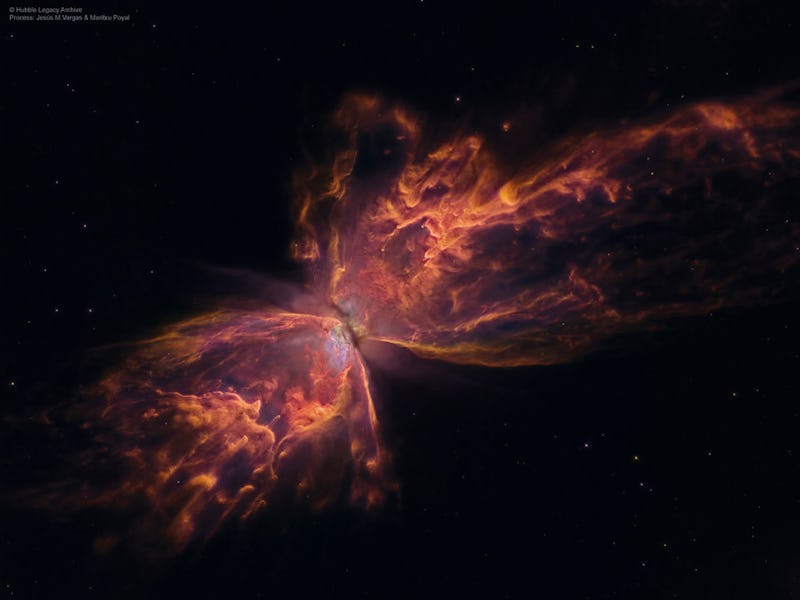
You don’t want to mess with this fiery butterfly. NGC 6302, or the Butterfly Nebula, has a wingspan of about 3 light-years that traverses across the constellation Scorpius in the Milky Way. The star is in its dying stages and giving off a magnificent amount of heat, made visible by an ultraviolet spectrometer on NASA’s Hubble Space Telescope. This image was reprocessed to show the heat, which is about 450,000 degrees Fahrenheit — over 45 times hotter than the surface of the sun.
The Butterfly Nebula is one of the hottest objects in the galaxy. The heat is trapped by a chemical cocktail of gases — mostly hydrogen, carbon, and oxygen. The dust forms an hourglass shape like this because the central star has an equatorial disc that magnetically pushes any lost star mass to the outer lobes. That matter is then locked in place by an ionized layer of more stardust, which creates a wall-like barrier around each lobe.
The Butterfly Nebula from the eye of the Hubble Space Telescope.
By now, the central star is a faint white dwarf, which was very difficult for scientists to see until recently. In 2009, the wide angle field camera on Hubble was finally able to see through the dense dust and gas to catch the last remnants of this dimly lit star.
Before long, the white dwarf will completely burn off, leaving nothing but a black and cold shell of what it once was. And the beautiful wings of this planetary nebula will cast off into the galaxy, an angelic farewell for the life of a star.